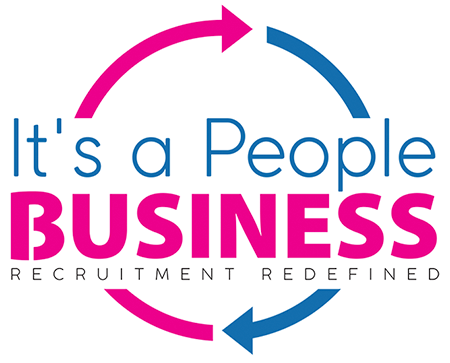
As organisations strive towards diversity and inclusion, it's crucial to ensure that the recruitment process is free from biases. A biased recruitment process can lead to a lack of diversity, a negative impact on company culture, and potential legal issues. However, removing biases from recruitment is easier said than done. It requires a thorough examination of the process, an understanding of the different types of biases, and a commitment to implementing changes to promote fairness and equity. In this blog post, we'll explore five tips to help you remove bias from your recruitment process. These tips are based on best practices and research, and they are designed to help you attract a diverse pool of candidates and make fair, objective decisions when selecting the best fit for your organisation. From creating a diverse hiring team to using objective criteria and metrics, these tips will help you remove unconscious biases and promote a more inclusive workplace.
By implementing these strategies, you'll not only improve your recruitment process but also foster a culture of inclusivity that will benefit your entire organisation. With a more diverse workforce, you'll be able to tap into a variety of perspectives, skills, and experiences, which can lead to better innovation and problem-solving. Additionally, a more inclusive workplace can lead to higher employee satisfaction and retention rates, as individuals feel valued and respected. Ultimately, by removing bias from your recruitment process, you'll be able to build a stronger, more successful organisation that is better equipped to thrive in today's competitive marketplace.
1. Define job requirements objectively
1. Define job requirements objectively

Inclusive hiring practices and DEI (Diversity, Equity, and Inclusion) are essential components of any successful recruitment process. One of the most important steps to take in removing bias from your recruitment process is to define job requirements objectively. This ensures that all candidates have an equal opportunity to apply and be considered for the position. Objectively defining job requirements means focusing on the skills, experience, and qualifications that are necessary for the role, rather than subjective preferences or traits that may exclude certain candidates based on their background or identity. By taking this step, you can ensure that your recruitment process is fair and inclusive, attracting a diverse pool of candidates and ultimately leading to a more successful and effective team.
2. Structured interviews with uniform questions
2. Structured interviews with uniform questions
Promoting diversity, equity, and inclusion (DEI) in the workplace requires implementing inclusive hiring practices. One effective method to eliminate bias from the recruitment process is adopting structured interviews with uniform questions. This approach involves asking all candidates the same set of questions in a consistent order, standardizing the interview process and ensuring an impartial evaluation based on uniform criteria. Using uniform questions helps steer clear of biased inquiries or discriminatory elements, fostering a fairer hiring process. Furthermore, structured interviews facilitate an objective comparison of candidates' qualifications.
Assemble a diverse and talented workforce.
Assemble a diverse and talented workforce.
By employing this approach, organizations can ensure that the selection process remains unbiased and equitable, ultimately leading to the hiring of the most qualified candidate for the position. Structured interviews offer multiple benefits in the pursuit of DEI goals, as they promote transparency and equal treatment throughout the hiring process. It not only upholds fairness but also enhances the likelihood of assembling a diverse and talented workforce. Embracing inclusive hiring practices like structured interviews aligns with the organization's commitment to creating a workplace that values diversity and provides equal opportunities for all candidates.
3. Use a blind resume review
3. Use a blind resume review

Implementing a blind resume review is a highly effective strategy for eliminating bias in your recruitment process. This approach involves removing personal identifying information, like names, addresses, and educational institutions, from resumes. By doing so, hiring managers can assess candidates solely based on their qualifications and expertise, free from any preconceived notions or biases. Blind resume reviews play a crucial role in promoting inclusive hiring practices and advancing DEI (Diversity, Equity, and Inclusion) efforts. They ensure that all candidates receive a fair and equitable evaluation.
Ensure that all candidates are evaluated fairly and equitably.
Ensure that all candidates are evaluated fairly and equitably.
To successfully implement a blind resume review process, it is essential to provide proper training to all team members involved in the recruitment process. This training should emphasize the significance of conducting a fair and objective assessment of each candidate's qualifications. By adopting blind resume reviews, organizations demonstrate their commitment to fostering a diverse and inclusive workforce. This approach enhances the chances of attracting talented individuals from various backgrounds, leading to a more robust and innovative team. As a result, blind resume reviews contribute to building a workplace culture that values merit and potential while reducing the impact of unconscious biases on hiring decisions.
Read More: The Future of Work: Predictions for Online Recruitment in the Next Decade
4. Diversify your recruitment sources
4. Diversify your recruitment sources

Creating an inclusive hiring process and promoting diversity, equity, and inclusion (DEI) in the workplace requires diversifying recruitment sources. Relying solely on traditional methods like industry-specific websites or word-of-mouth referrals can limit candidate diversity and reinforce unconscious bias. To attract a broader pool of applicants with diverse backgrounds, experiences, and skills, it is important to expand recruitment sources. Organizations should consider participating in job fairs, cultural events, and engaging with community organizations. These avenues help connect with candidates from different communities and backgrounds.
Attract a more diverse pool of applicants with varied backgrounds, experiences, and skill sets.
Attract a more diverse pool of applicants with varied backgrounds, experiences, and skill sets.
Additionally, leveraging technology platforms such as social media, online job boards, and professional networks can expand reach and enhance visibility of job openings. By embracing a wide array of recruitment sources, organizations can tap into a more diverse talent pool. Intentionally diversifying recruitment sources not only increases the chances of finding qualified candidates from different backgrounds but also sends a strong message about the organization's commitment to DEI. It demonstrates a proactive effort to create opportunities for individuals from underrepresented groups. By embracing diversity in the hiring process, organizations can foster an inclusive work environment that values and leverages the unique perspectives and experiences of all employees.
5. Train your hiring team regularly
5. Train your hiring team regularly

Regularly training your hiring team on diversity, equity, and inclusion (DEI) principles is vital to removing bias and fostering inclusive hiring practices. The training should encompass unconscious bias, cultural competence, and how to conduct inclusive interviews. Equipped with this knowledge and skillset, your team can identify and address bias during the recruitment process. Ongoing education empowers your team to stay abreast of best practices and adapt to evolving DEI trends and guidelines.
Ensure that the team can adapt to changing DEI trends and guidelines.
Ensure that the team can adapt to changing DEI trends and guidelines.
By investing in their training, you ensure that they are well-prepared to create a more equitable and inclusive recruitment process. This approach not only reduces discriminatory practices but also fosters a diverse and talented workforce. Prioritizing DEI training demonstrates your organization's commitment to fair and inclusive hiring, leading to improved employer branding and employee satisfaction. Ultimately, an inclusive recruitment process contributes to a stronger and more innovative organization, benefitting both your team and the communities you serve.
Read More: Mastering the Main Stages of Any Recruitment Discussion: A Practical Guide for Employers
Conclusion
Conclusion
Removing bias from the recruitment process is an ongoing effort that requires a combination of awareness, education, and action. By implementing the five tips outlined in this article, companies can create a more equitable and inclusive recruitment process that attracts diverse talent and fosters a culture of belonging. It is important to remember that diversity and inclusion are not just buzzwords, but essential elements of a successful and competitive organisation. Let's continue to strive for fairness and equality in our recruitment practices, one step at a time.
Read More: The Benefits of Working with a Flat Fee Recruiter
Reach out to It's a People.Business for expert guidance and support in implementing these best practices. Our team of recruitment professionals can help you develop a cost-effective and efficient hiring strategy that aligns with your business goals. Contact us today to learn more and take the first step towards building a strong and talented team for your small business.
